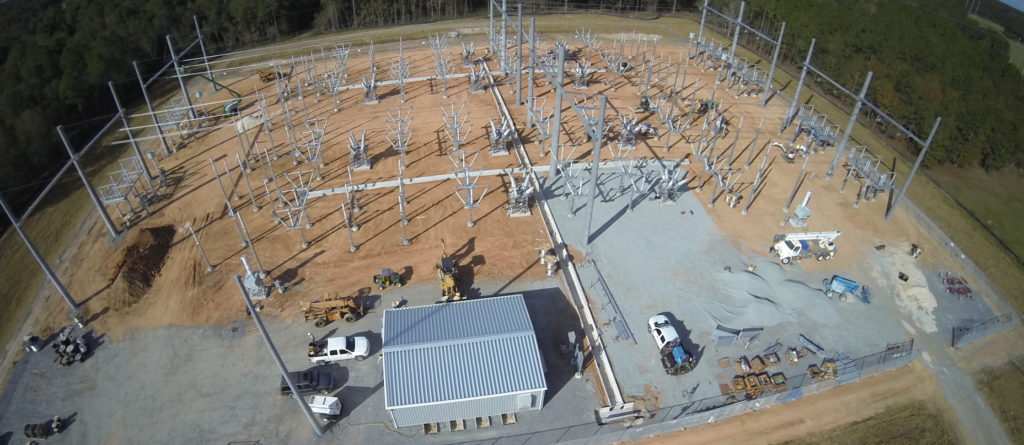Bringing electricity from power plants to plugs is a complicated process. Georgia Transmission is the critical link between energy generation at power plants and distribution from electric cooperatives. We help keep the lights on in Georgia by building and maintaining high-voltage transmission lines and substations for local EMCs.
Transmission lines tend to get most of the glory for helping bring power to homes, schools and businesses across the state. But strategically placed and designed substations deserve equal credit for their important role in getting reliable, affordable energy to Georgians.
To create and maintain an efficient, steady flow of power to millions of people, energy must be transmitted at high voltages, so it can travel across long distances. But, before it can be sent directly to individual users, it must be stepped down. This is where the substation comes in.
Once the voltage is lowered, it can be delivered to the EMCs through their network of power lines. These are the lines commonly seen strung on wooden poles throughout neighborhoods and lining city streets. And these are the lines that connect directly to consumer-members.
As power demand and population grow across the state, so too does the need for new power lines and substations. And just as there are linemen and engineers planning and maintaining power lines, there’s a team dedicated to scoping and designing new substations — a process that can take up to a year.

The supervisor of that team is Larra Stansbury, a 14-year veteran at Georgia Transmission. When it comes to Larra and her team’s work, there is no cookie-cutter approach.
“Substations vary all across the state,” Larra said. “There are different voltages, ratings, capacities, populations and topographies. There’s no one substation that looks like another.”
Larra and her team take great care in designing substations. In fact, the team’s efficient and thorough processes can result in saving millions of dollars on a single substation.
“That’s important, because savings on our end means savings for EMCs and their consumer-members,” Stansbury said.
With a skilled and dedicated team at the helm, Georgia Transmission is able to build and maintain substations that are capable of helping deliver energy to more than 4 million Georgians safely, reliably and affordably.

